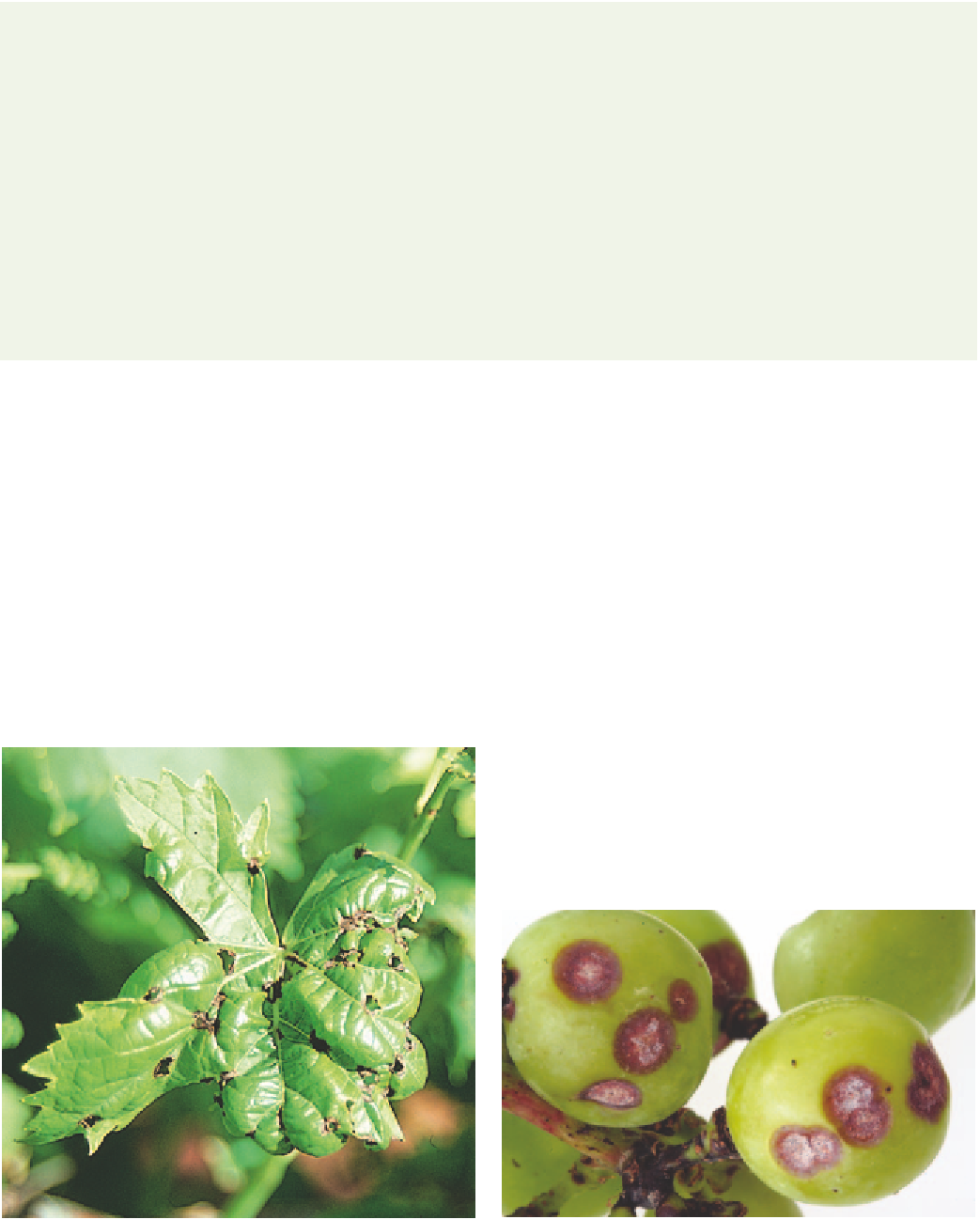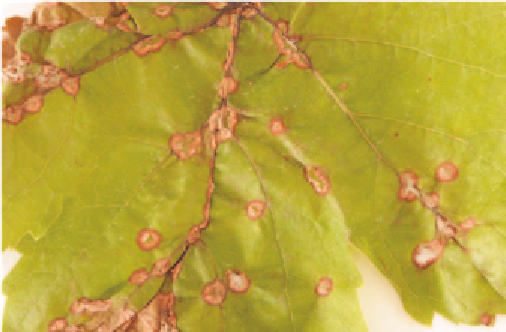Agriculture Reference
In-Depth Information
berries begin to dry and shrivel, becoming hard,
blue-black mummies.
The pathogen could enter Australia on illegally imported
vines or fruit.
All introductions of grapevine material to Australia must
pass through post-entry quarantine where they are tested
and propagated to prevent the entry of new pathogens.
Source of infection and spread
The fungus survives in mummified berries, either in the
soil or attached to vines. Spores are released following rain
and warm, wet conditions favour disease development.
What to do if you suspect black rot
This pathogen is a biosecurity risk to Australia. Any
suspected affected plants should be reported to the
nearest Department of Primary Industries or the Plant
Health Australia hotline (1800 084 881).
Importance
The pathogen does not occur in Australia. Black rot is an
important disease of grape in the north-eastern United
States, Canada and parts of Europe and South America.
Under favourable conditions, large crop losses can occur
in susceptible varieties.
Bunches infected before or during f flowering may have
girdled stalks, causing berries to wither and drop. Infected
berries have round, sunken, brown spots that enlarge to
form dark, purple-black 'bird's eye' spots, 2-7 mm in
diameter, often with a grey centre.
Symptoms
Young leaves are very susceptible and develop small,
chocolate-brown spots 1-3 mm in diameter. As the disease
progresses, the spots rapidly enlarge into circular, grey-
black patches, 2-5 mm in diameter, with reddish-purple
margins on older leaves, and the disease spreads to infect
adjacent foliage. The spots may coalesce and appear in lines
along the veins. The centres of the spots tear away and the
leaves become crinkled, tattered and shot-holed.
Young shoots develop small, brown spots, enlarging to
elliptical, red-purple to black, sunken areas with grey
centres. Growth is stunted and gnarled.
Fig 9.11 Close up of black spot leaf lesions.
Fig 9.10 Shot-holed and crinkled leaves caused by black spot.
Fig 9.12 Black spot producing pink spores on fruit.













